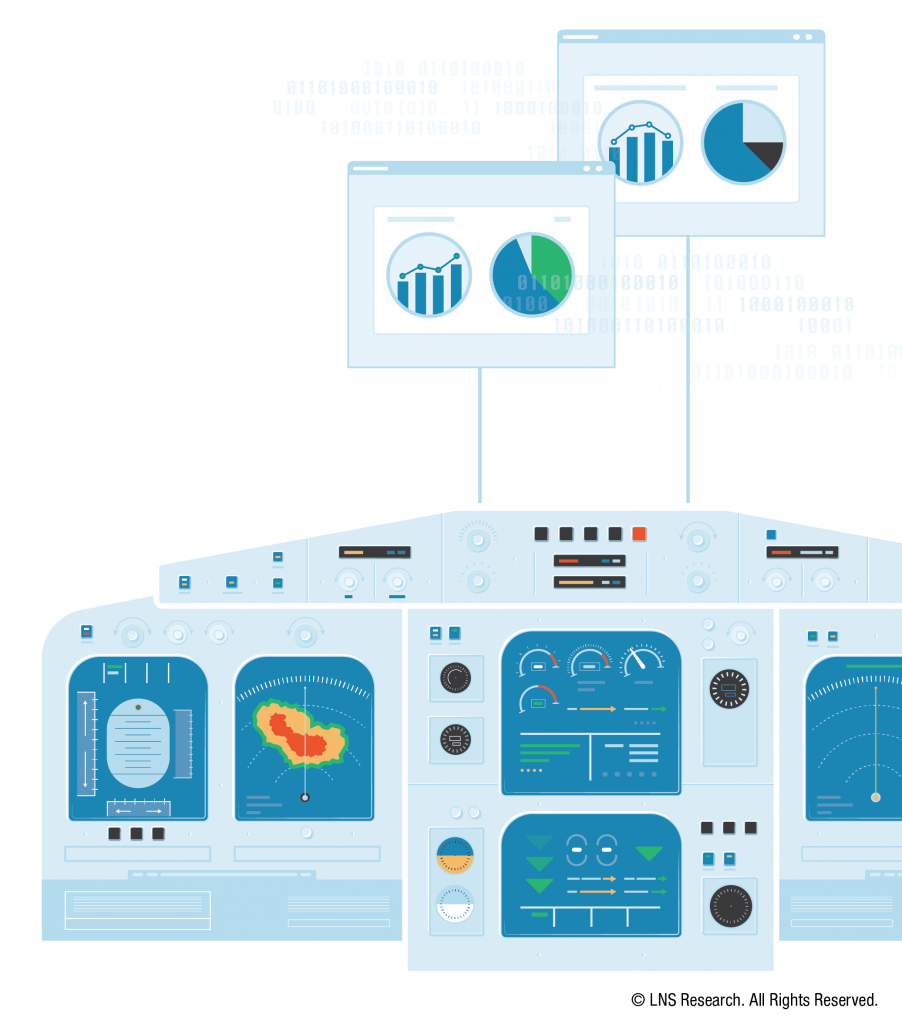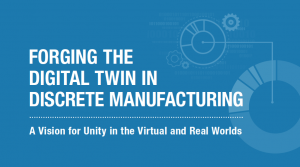This is Part 9 of our 12-part blog series based on the LNS Research eBook,“Forging the Digital Twin in Discrete Manufacturing: A Vision for Unity In the Virtual and Real Worlds”.
Previously in Part 8 we explored how Digital Twin technology can simulate the manufacturing process. Now let’s look at the software in Digital Twin for manufacturing.
Software in Digital Twin
Software and manufacturing have not always been the best of bed-fellows. Someone designed the hardware, specified the computing requirements, and neatly laid out the calling for the system. Meanwhile, someone else wrote the software. Software integration and managing software as a part of the manufacturing bill of materials (mBOM) have, in the past, been haphazard. Managing software versions and the relationship to electronics (and the many versions) has taken leaps forward in the last several years, at least in the production world. Tesla’s approach to uploading new software versions to a vehicle is an approach that other manufacturers will need to stay competitive. While many older consumers buy a car and never update it, younger generations will, at very least, expect their vehicle’s software to be as current as their smartphone.
The first step towards this software nirvana involves running product software in its digital twin. The twin must emulate hardware, operating system and possibly communication. Testing software on a product twin, including perhaps hundreds of product variants (like aircraft), can dramatically change the way manufacturers provide post-sale service in complex discrete industries.

EXALEAD Commentary
Consumer products are becoming more and more intuitive. Consequently, they no longer need complex user interfaces in order to be controlled and used. Our relationship with products is changing: users don’t need to be physically close to their devices anymore to control them.
- The Man-Machine Interface has been handed over to remote controls, including smart phones, mobile devices and tablets.
- Devices are transforming from passive to active with the help of sensors that detect users’ presence and motion, thereby enabling the device to adapt its behavior to respond appropriately.
These innovations which are, for now, mainly addressing the consumer market, will affect industrial equipment. Thanks to the power of software, equipment will become polyvalent and resilient.
As a result, the combination of possible uses for any given piece of equipment will grow exponentially. Embedded artificial intelligence and machine learning will empower new possibilities for using the equipment. All users will have the ability to influence the way the equipment should behave for their own usage.
Testing will no longer be limited to performing some mechanical or electronical tests to validate a system; rather, it will require taking the user and the full context into consideration. Each product will become unique. A Digital Twin of the product will be the only way to know how to provide the right support for after-sales.
Dassault Systèmes’ 3DEXPERIENCE twin Model Based Systems Engineering empowers manufacturers to simulate the full value chain from design to user experience.
In the next blog installment, we will explore simulating the manufacturing process with Digital Twins.
Part 1: What is a 3DEXPERIENCE Twin?
Part 2: Digital Twins and Manufacturing: Today’s Possibilities
Part 3: Who is Using Digital Twin Technology?
Part 4: Growth Expectations for Digital Twins in Manufacturing
Part 5: Digital Twin Use Cases in Manufacturing
Part 6: Exploring Digital Twin Opportunities in Manufacturing
Part 7: Simulating Product Use with Digital Twins in Manufacturing
Part 8: Simulating the Manufacturing Process with Digital Twins
Part 9: Software in Digital Twin
Part 10: Real Data Versus Virtual Data
Part 11: Digital Twin: Pragmatic Considerations
Part 12: Recommendations for Getting Started with Digital Twin

Read LNS eBook on Forging the Digital Twin in Discrete Manufacturing
Join our User Communities to stay on top of the latest industry news, ask questions and collaborate with peers:
- EXALEAD Sourcing & Standardization Intelligence User Community
- 3DEXPERIENCE Marketplace | PartSupply User Community
- NETVIBES Public Community

